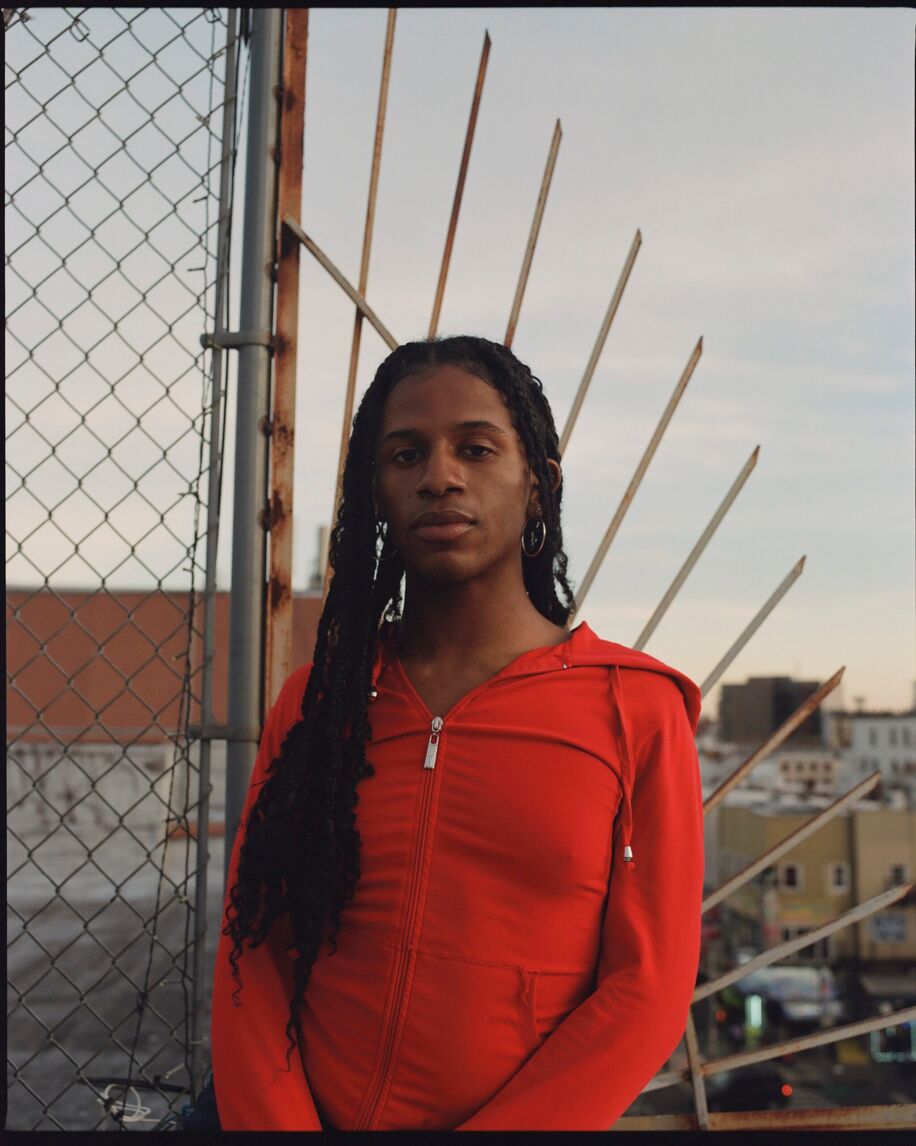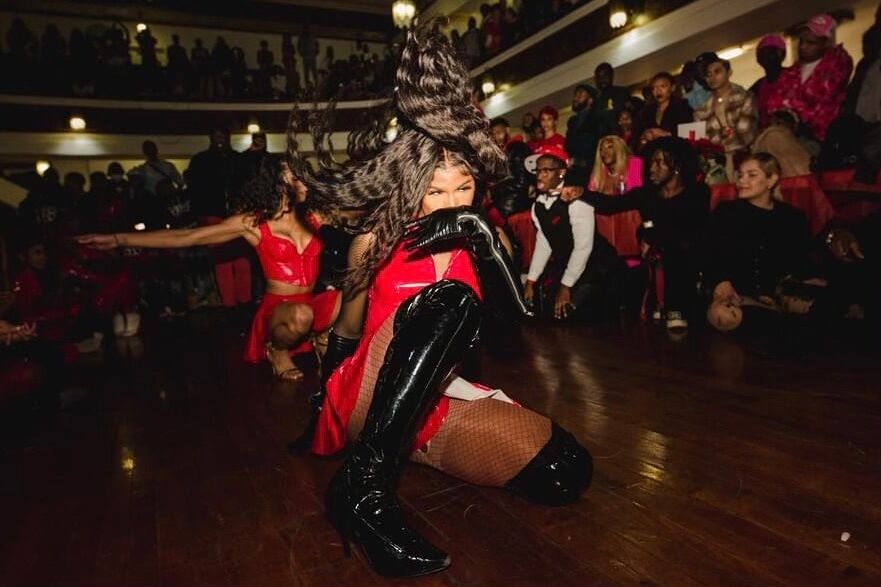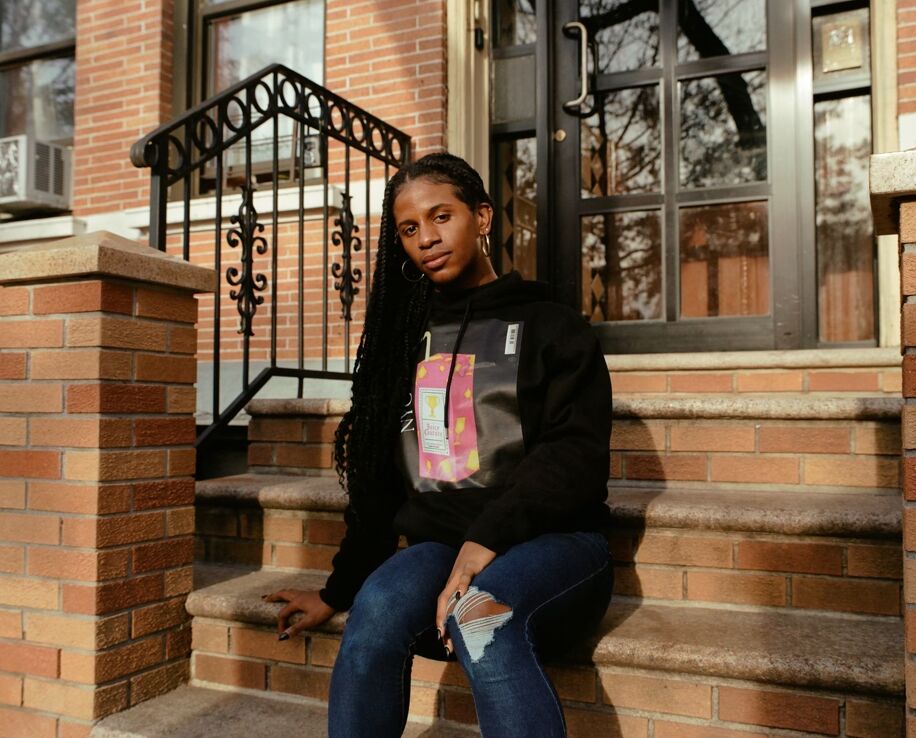*Photo credit: Ramie Ahmed
In the years post-Pose and HBO’s Legendary, the Ballroom community’s visibility has soared to new heights. Instagram and TikTok accounts like @bestofvogue have amassed millions of followers, placing eyes on a community that, for decades, has survived – and thrived – out of the public eye.
24-year-old N’yomi Stewart hails from a new generation of up-and-coming stars in the Ballroom community; one that has used social media to archive their own experiences in the scene. After building up New York City’s historic vogue scene at the Christopher St. Piers, featured in the documentary Paris is Burning, N’yomi was deemed “Princess of the Pier.” She’s also a member of two of Ballroom’s Iconic houses: the House of Balenciaga and the Kiki House of Juicy Couture. No shade to the other girls, but she’s kind of the Ballroom scene’s “It Girl” right now.
Outside of Ballroom, Stewart is a performer whose credits include Shakespeare in the Park’s production of Richard III, and the recent Off-Broadway revival of A Raisin in the Sun, making her the first out trans woman to play the role of Beneatha in a major American production of the play. Those experiences, she says, taught her the values of ditching ego and hanging onto patience.
“Not ego in a sense of I deserve to be the main [performer], ego in a sense of, I want to act, I’m ready to tell this story. I’m ready to get on that stage,”
INTO sat down with Stewart to chat about vogue as a creative outlet, how to respectfully engage with the Ballroom community, and where she sees the future of Ballroom.

When it comes to vogue, how do you get out of your mind and into the feeling?
I have to think of it as, what’s the story that I felt today? That last moment you get when it’s 1001, 2002, 3003 and hold that pose for me, what’s the end of your story? What did you just do before? When I step on that floor, I’m like Marilyn Monroe. Everyone loves me. I feel loved and supported. I feel like I’m the people’s princess. People fight for me. Sometimes I just go in and I blackout and sometimes I feel something a little different. But for the most part, I’ve been really thinking about Marilyn Monroe and how I can channel her in my process.
That’s so real. Somebody a couple of months ago told me, “Figure out who it is you vogue for.”
Yes, I always tell my first daughter, Essence, “You have nothing to prove and everything to show. You have nothing to prove to these people, but you have so much to say. So let us see you.” And that’s the beautiful thing about performance and Ballroom. Everybody wants to see the story. Ballroom loves the glow up, an evolution, a change, especially if you’re a femme queen. Someone coming in, shaking the table and making it hot. Someone changing and having a new perspective.

Tell me how you became Princess of the Pier.
There was a mini-ball started by Nicky Juicy, NYC Mother of the House of Juicy Couture, and one of the queens of the Kiki scene. I walked the ball. I won the ball, and Quanna, Mother of the Pier, deemed me Princess of the Pier. And she was like, “One day it’s going to be you, you’re going to be Mother.”
I think it goes hand in hand with the fact that I won that ball, I started a whole pier scene in New York, [and] that she was like, “Okay, you’re Princess of the Pier. I see it for you.” Motherhood is a beautiful thing to me. And the idea of chosen families, of being Princess of the Pier, to me, it’s a spiritual thing as much as it is a ki.
What’s the most interesting thing that you’ve found out about Ballroom history since you’ve been in a house and in the scene?
How much Ballroom [has] evolved. How mainstream Ballroom is now, [and] how much access people have to ballroom and the communities that are ballroom affiliated. I think that’s a major thing and to see how we are gaining praise, fans, and admiration for being out and proud and voguing when [elder community members] were like, “Girl, we do this because that’s all we got.” Hearing [about] people finally [getting] their roses, be put on magazines, on TV, and in shows because of their contribution to Ballroom, I see Ballroom as this community that will continue to get its roses if we continue to be in charge of our own narratives, stories, and shows.

What’s the best way that people can get into Ballroom while still being respectful of the culture?
To come around with good intentions. You have to have grace – I’m one of those people who used to put a lot of pressure on this marginalized community that’s been underground and low key. Come in humbled by the way that people are allowing you into a space that is not for everyone. There’s a lot of structures, even within Ballroom, that people would not understand.
I won that ball, I started a whole pier scene in New York, [and] that Quanna, Mother of the Pier was like, “Okay, you’re Princess of the Pier. I see it for you.”
N’yomi Stewart
Unless they knew the history of where it came from.
Unless they knew the history, unless they were around the girls. But if you’re going to come to Ballroom, come hungry, come humble, come open, come with grace, come with big ears, and sometimes a smaller mouth and immerse yourself in it. Have your boundaries and know what you want out of it.
What’s unique about Ballroom as a community?
I feel like it’s a really beautiful community. It has its flaws, everything does. But Ballroom’s like a high to me, an emotional high. To be seen and to be respected, it’s a feeling that you don’t get in every space that you enter. Sometimes you have to earn that for years and years and years.

What advice would you have for people who are trying to connect to the stories that they want to tell through vogue?
Don’t think, do. Just [like] how in school they say, “Acting is doing.” It’s an action. Voguing is a form of expression. No matter what category you walk, it’s a story. It’s something you play, something you put on. And it’s innately going to be personal because it’s you. But when it comes to performance, don’t think – do. No matter who you are, your life experiences, that’s the work. When you go into a practice, that’s the work. But when you perform, when you’re letting it out, you just gotta let go and let loose. It’s going to be so much more beautiful then and personal when you’re not in your head thinking about the technique all the time. The technique will come. You do it so much, it’ll be natural.♦
Related:
Drag Artist Jasmine Rice LaBeija Brings Her ‘Birthday Presence’ to Lincoln Center
“Without queer people and drag performers where would our society even be?”
Don't forget to share:
Help make sure LGBTQ+ stories are being told...
We can't rely on mainstream media to tell our stories. That's why we don't lock our articles behind a paywall. Will you support our mission with a contribution today?
Cancel anytime · Proudly LGBTQ+ owned and operated
Read More in Entertainment
The Latest on INTO
Subscribe to get a twice-weekly dose of queer news, updates, and insights from the INTO team.
in Your Inbox














